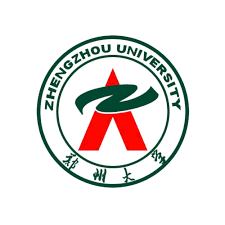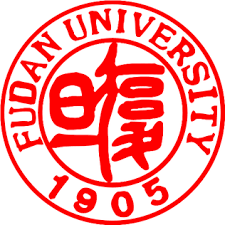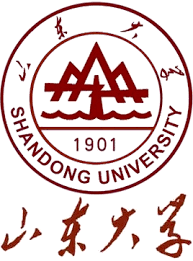

Huazhong University of Science and Technology . Deadline 30th June.
The Huazhong University of Science and Technology (HUST) is a national key university directly under the administration of the Ministry of Education of P. R. China, and is among the first Universities joining the national “211 Project” and “985 Project”. It was founded on May 26, 2000, as a result of the merger of the former Huazhong University of Science and Technology, Tongji Medical University, and Wuhan Urban Construction Institute.
At present, the University has eleven disciplines: engineering, medicine, management, science, philosophy, economics, law, education, literature, history, and agriculture, offering a variety of degree programs, including 86 undergraduate programs, 303 graduate programs, 237 Ph.D. programs. There are 31 post-doctoral research centers, 7 national key disciplines, 15 national key subdisciplines.

Wuhan University: Deadline 1 July.
The history of Wuhan University can be traced back to Ziqiang Institute, which was founded in 1893 by Zhang Zhidong, the then governor of Hubei Province and Hunan Province in the late Qing Dynasty. In the process of development and evolution, the institute changed its name several times before it was finally named Wuhan National University in 1928. It is one of the earliest comprehensive national universities in modern China. By the end of 1946, the university had established 6 colleges, the colleges of liberal art, law, sciences, engineering, agriculture, and medicine. In 2000, an amalgamation of the former Wuhan University, Wuhan University of Hydraulic and Electric Engineering, Wuhan Technical University of Surveying and Mapping, and Hubei Medical University was announced, which ushered in a new era in its 100 years of development.
For the past century, Wuhan University has built an elegant palatial architectural complex of primitive simplicity which blends perfectly the eastern architectural style with that of the west. It is honored as the “Most Beautiful University in China.” Furthermore, Wuhan University’s centennial humanistic accumulation boils down to its succinct motto, that is, “Improve Oneself, Promote Perseverance, Seek Truth and Make Innovations.”
Since its establishment, Wuhan University has cultivated more than 300 thousand professional talents in various occupations, among whom there are over 100 members of the Chinese Academy of Science and the Chinese Academy of Engineering. They have made a great contribution to national construction and social advancement. The remarkable achievements of Wuhan University have won itself an extensive international reputation. In 1999, the world-renowned journal Science listed Wuhan University as one of the most prominent institutions of higher education in China.
Burgeoning is the international exchange and cooperation of Wuhan University in recent years. It has established a cooperative relationship with more than 400 universities and research institutes in over 70 countries and regions.

Zhengzhou University: Deadline 28 June.
In 2000 Zhengzhou University has been approved to offer EMI MBBS program to international students with the annual recruitment quotas of 200 students. The goal of the curriculum is to produce doctors who are competent in the understanding and delivery of effective, humane and ethical medical care, committed to lifelong learning, and ready to proceed to postgraduate training. Students are encouraged to be active in managing their own learning and to question both what and how they learn through problem-based, small-group tutorials. These tutorials foster the development of skills for interpersonal communication and teamwork, and help train students to become lifelong learners. They emphasize the inter-connections between different fields of knowledge. Essential elements of basic science and clinical practice are learnt through an integrated approach. Students are given the opportunities to choose and explore specific areas of interest or experience in either medical or non-medical fields by making use of the electives to be held in the second half semester of the third year and at the end of the final year after the final examination. They are required to incubate and brainstorm protocols for a health research project. They are also exposed to various clinical settings through clinical visits and attachments, and will engage themselves in voluntary and community services, overseas exchange and/or other learning activities.

Fudan University: Deadline 28 May.
According to the “Provisional Regulations on Quality Control Standards of English-Taught Medical Undergraduate Education for International Students in China”, the Ministry of Education of China has approved Fudan University as one of thirty universities in China permitted to enroll international students in English-taught undergraduate programs in medicine. To promote international education, Fudan University began enrolling international students in the English-taught undergraduate medical program in fall 2008. The program aims to produce high-caliber medical graduates with the solid medical knowledge, competent clinical skills, and professionalism while giving due consideration to the possible needs for them to serve in countries outside of China. Graduates of the program will have the ability to work in medical and health institutions, making meaningful contributions to the areas of patient care, education, and research.
The program is taught completely in English and follows the principles of consolidating academic knowledge, with emphasis on technical skills, interdisciplinary studies, and clinical practice.
Offered by the Shanghai Medical College of Fudan University, this program is open to international students intending to pursue the science and practice of medicine. Students who excel will have the opportunity to participate in overseas clinical internship programs. After completing the required number of credits, students will be conferred a diploma from Fudan University, and qualified students will receive a degree of Bachelor of Medicine and the Bachelor of Surgery (MBBS). Graduates will have the opportunity to register for medical licensing exams in accordance with the requirements of the relevant regulatory bodies of the countries in which they choose to practice.
Curriculum:
Brief Introduction to China, Chinese Language, Medical Chinese, Mathematics, Physics, Chemistry, Biological Sciences, Computers, Organic Chemistry, Histoembryology, Anatomy, Cell Biology, Genetics, Physiology, Biochemistry and Molecular Biology, Immunology, Microbiology, Parasitology, Pathophysiology, Pathology, Medical Ethics, Pharmacology, Diagnostics, Diagnostic Imaging, Medicine, Surgery, Obstetrics and Gynecology, Pediatrics, Preventive Medicine, Epidemiology. Medical Psychology, Psychiatry, Neurology, Dermatology, Oncology, Ophthalmology, Otolaryngology, Stomatology, Forensic Medicine, and Traditional Chinese Medicine.

Shandong University. Deadline June 15.
Located in the economic powerhouse and cultural heartland of China, Shandong University (SDU) is one of China’s top universities and is well-reputed for world-acclaimed researchers, dedicated teaching staff, and superior campus facilities and services.
Shandong University is one of the initiative universities of modern Chinese higher education. Its medical school, established in 1864, signified the beginning of modern Chinese higher education. Its main body, Shandong Imperial College (Shandong Da Xue Tang) established in 1901, was the second national university in China, only after the Imperial University of Peking.
To increase your chance of getting accepted for the course, you need to apply for the course before the deadline
Latest Courses




Latest Courses












Share this program
Leave a reply
Your email address will not be published. Required fields are marked